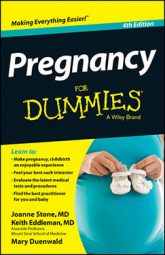Caput succedaneum — more commonly called caput — refers to a circular area of swelling on the baby's head, located at the spot that pushed against the cervix's opening during delivery. The exact location of the swelling varies, depending on the position that the baby's head was in.
The swollen area can range in size from only a few millimeters in diameter to several centimeters (a few inches). Caput generally goes kaput within 24 to 48 hours after birth.
Babies who are born headfirst (vertex) often go through a process known as molding. This molding occurs because throughout labor, as the baby descends gradually through the birth canal, he "fits" his way along.
![[Credit: Kathryn Born, MA]](https://www.dummies.com/wp-content/uploads/438723.image0.jpg)
In fact, sometimes your practitioner may tell you that he can feel the baby's head molding to the canal even before the baby is born. Molding doesn't cause any harm. The bones and soft tissues in the baby's head are designed to allow this molding to happen. The result is often a baby with a cone-shaped head.
![[Credit: Kathryn Born, MA]](https://www.dummies.com/wp-content/uploads/438724.image1.jpg)
By 24 hours after delivery, the molding usually disappears, and the baby's head appears round and smooth.
Some women, particularly those who have had children before or who had rapid labor, have babies with no molding. Also, babies born in the breech presentation or by cesarean may not have molding.
Sometimes, during the passage through the birth canal, a baby's ears can also fold down into strange positions. The same thing can happen with the baby's nose, so that at first, it may appear asymmetric, or pushed to one side, but these features are no reason to rush your baby to a plastic surgeon. These minor oddities are temporary and disappear during the first few days.

